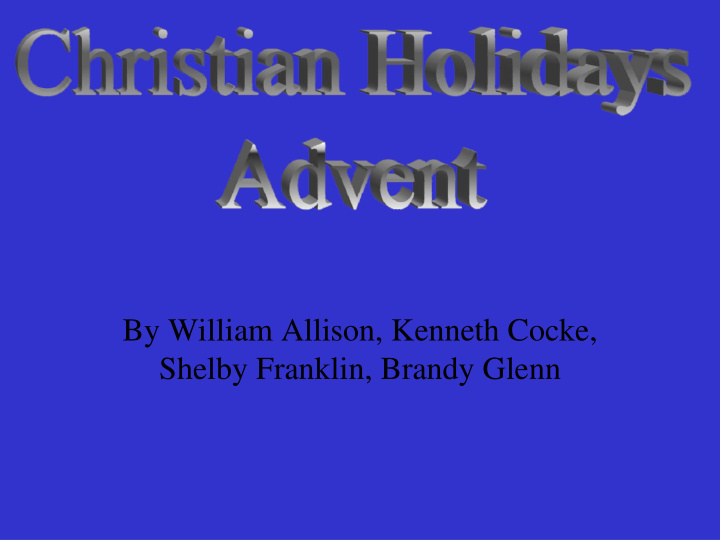



By William Allison, Kenneth Cocke, Shelby Franklin, Brandy Glenn
A Brief History of Advent • In the 5th century, the Bishop of Tours instituted a fast beginning on November 11, and the acts of the Council of Tours in 567 mention an Advent season. • In 581, a synod in Gaul declared that from November 11 to Christmas, the mass shall be performed using the Lenten rite on Monday, Wednesday, and Friday of each week. • Today, during Advent fasting is no longer observed.
Advent • Advent by definition means “The coming or arrival, especially of something extremely important.” • In a biblical sense the season of Advent is a time of preparation for the second coming of Jesus Christ • The celebration of advent did not take place until the fourth century. • Originally it was for the preparation of baptism
The Liturgical Aspects of Advent “ the season of Advent has a • two-fold character: It is a time of preparation for Christmas when the first coming of God's Son to humanity is recalled. It is also a season when minds are directed by this memorial to Christ's second coming at the end of time. It is thus a season of joyful and spiritual expectation. ” It is customary to wear purple during the services of the Advent season
Advent Celebration • Advent takes place during four Sundays, beginning with the Sunday nearest to November 30 and ending on Christmas Eve. • Advent is also similar to another Christian holiday, Lent.
The Advent Wreath • The Advent Wreath is used as a symbol, the circle representing the eternity of God and the light from the candles, the anticipation of the coming o Jesus Christ
Significance of The Candles • First Candle • Color: Purple Theme: Hope First Sunday in Advent • Second Candle • Color: Purple Theme: Love Second Sunday in Advent • Third Candle • Color: Purple or pink Theme: Joy Third Sunday in Advent • Fourth Candle • Color: Purple Theme: Peace Fourth Sunday in Advent
Recommend
More recommend